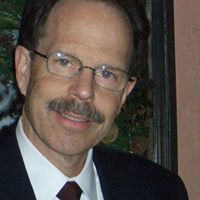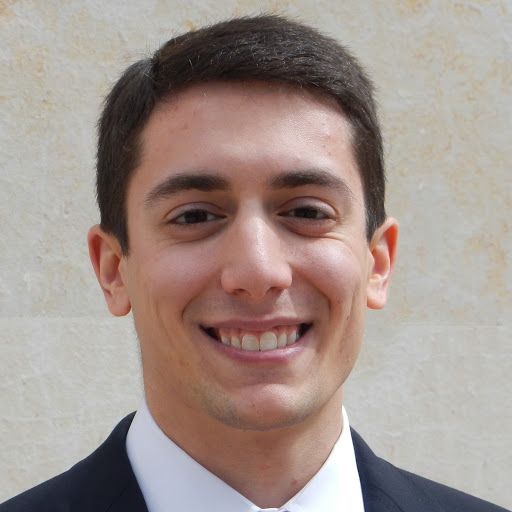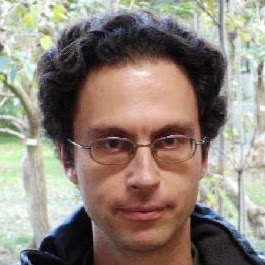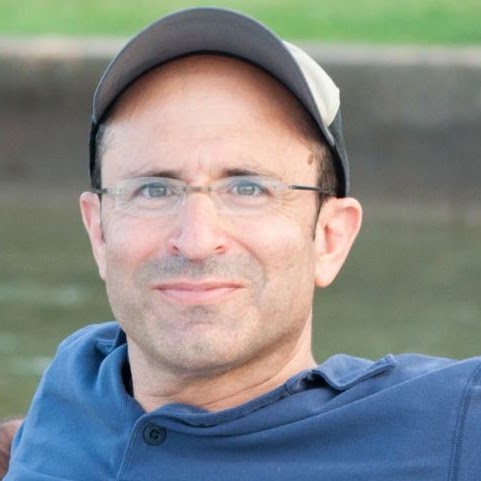David Mark Sternberg
age ~73
from Walnut Creek, CA
- Also known as:
-
- David M Sternberg
- David Susan Sternberg
- David Jt Sternberg
- Dave Sternberg
- Phone and address:
-
540 Lennon Ln, Walnut Creek, CA 94598
9259461400
David Sternberg Phones & Addresses
- 540 Lennon Ln, Walnut Creek, CA 94598 • 9259461400
- San Ramon, CA
- 64 Lane Ct, Oakland, CA 94611 • 5103391340
- Martinez, CA
- Lucerne, CA
- Concord, CA
- Antioch, CA
- Richmond, CA
- Danville, CA
- San Francisco, CA
Work
-
Company:David m sternberg
-
Address:540 Lennon Ln, Walnut Creek, CA 94598
-
Phones:9257439400
-
Position:Principal
-
Industries:Legal Services
Education
-
Degree:T.A
-
School / High School:Sangamon State University
Ranks
-
Licence:California - Active
-
Date:1980
Specialities
Commercial Retail Assets
Real Estate Brokers

David Sternberg, San Francisco CA Agent
view sourceSpecialties:
Commercial Retail Assets
Work:
San Francisco, CA
4158373721 (Phone)
4158373721 (Phone)
Resumes

Attorney At Law
view sourceLocation:
540 Lennon Ln, Walnut Creek, CA 94598
Industry:
Law Practice
Work:
David Sternberg and Associates
Attorney
Attorney
Education:
Sangamon State University 1994
Golden Gate University, School of Law 1980
Doctor of Jurisprudence, Doctorates, Law Antioch College 1974
Bachelors, Economics
Golden Gate University, School of Law 1980
Doctor of Jurisprudence, Doctorates, Law Antioch College 1974
Bachelors, Economics
Skills:
Administrative Hearings and Adjudication
Alternative Dispute Resolution
Arbitration
Bankruptcy Law
Bankruptcy Litigation
Business and Commercial Law
Commercial Bankruptcy
Commercial Real Estate
Complex Litigation
Consumer Bankruptcy
Creditors' Rights
Debt Discharge
Estate Administration
Ethics
Ethics and Professional Responsibility
Federal Trial Practice
Civil Litigation
Real Estate Law
Mediation
Probate
Professional Responsibility
Secured Transactions
State Trial Practice
Transactional Law
Alternative Dispute Resolution
Arbitration
Bankruptcy Law
Bankruptcy Litigation
Business and Commercial Law
Commercial Bankruptcy
Commercial Real Estate
Complex Litigation
Consumer Bankruptcy
Creditors' Rights
Debt Discharge
Estate Administration
Ethics
Ethics and Professional Responsibility
Federal Trial Practice
Civil Litigation
Real Estate Law
Mediation
Probate
Professional Responsibility
Secured Transactions
State Trial Practice
Transactional Law
Interests:
Cooking
Law
Photography
Tennis
Travel
Law
Photography
Tennis
Travel

David Sternberg
view source
David Sternberg
view source
David Sternberg
view source
David Sternberg
view sourceLocation:
United States

Owner, David M Sternberg And Associates
view sourcePosition:
Owner at david m sternberg and associates
Location:
San Francisco Bay Area
Industry:
Law Practice
Work:
david m sternberg and associates
Owner
Owner
Education:
Antioch University 1970 - 1974

Agent At Roessler Investment Group
view sourceLocation:
San Francisco Bay Area
Industry:
Commercial Real Estate
Vehicle Records
-
David Sternberg
view source -
Address:64 Ln Ct, Oakland, CA 94611
-
Phone:5104108416
-
VIN:WMWMF73517TL89012
-
Make:MINI
-
Model:COOPER
-
Year:2007
Isbn (Books And Publications)

How to Complete and Survive a Doctoral Dissertation
view sourceAuthor
David Sternberg
ISBN #
0312396066

How to Complete and Survive a Doctoral Dissertation
view sourceAuthor
David Sternberg
ISBN #
0312396058

Radical Sociology: An Introduction to American Behavioral Science
view sourceAuthor
David Joel Sternberg
ISBN #
0682488070
Medicine Doctors

David E. Sternberg
view sourceSpecialties:
Psychiatry, Addiction Psychiatry
Work:
Psychiatry Associates Chartered
527 SW Market St, Lees Summit, MO 64063
9132099495 (phone), 9134980523 (fax)
527 SW Market St, Lees Summit, MO 64063
9132099495 (phone), 9134980523 (fax)
Education:
Medical School
Tufts University School of Medicine
Graduated: 1971
Tufts University School of Medicine
Graduated: 1971
Procedures:
Psychiatric Therapeutic Procedures
Conditions:
Anxiety Dissociative and Somatoform Disorders
Anxiety Phobic Disorders
Attention Deficit Disorder (ADD)
Bipolar Disorder
Depressive Disorders
Anxiety Phobic Disorders
Attention Deficit Disorder (ADD)
Bipolar Disorder
Depressive Disorders
Languages:
English
Description:
Dr. Sternberg graduated from the Tufts University School of Medicine in 1971. He works in Lee's Summit, MO and specializes in Psychiatry and Addiction Psychiatry. Dr. Sternberg is affiliated with Northwest Missouri Psychiatric Rehabilitation Center and St Joseph Medical Center.

David William Sternberg
view sourceSpecialties:
Internal Medicine
Hematology & Oncology
Hematology
Medical Oncology
Hematology & Oncology
Hematology
Medical Oncology
Education:
Cornell University (1993)
Lawyers & Attorneys

David Mark Sternberg, Walnut Creek CA - Lawyer
view sourceAddress:
Sternberg & Coad-Hermelin Llp
540 Lennon Lane, Walnut Creek, CA 94598
9259461400 (Office), 9259461400 (Fax)
540 Lennon Lane, Walnut Creek, CA 94598
9259461400 (Office), 9259461400 (Fax)
Licenses:
California - Active 1980
Education:
Sangamon State University
Degree - T.A - Computer Programing
Graduated - 1994
Sangamon State University
Degree - T.A - Education
Graduated - 1994
Golden Gate University School of Law
Degree - JD - Juris Doctor - Law
Graduated - 1980
Antioch College
Degree - BA - Bachelor of Arts - Economics
Graduated - 1974
Degree - T.A - Computer Programing
Graduated - 1994
Sangamon State University
Degree - T.A - Education
Graduated - 1994
Golden Gate University School of Law
Degree - JD - Juris Doctor - Law
Graduated - 1980
Antioch College
Degree - BA - Bachelor of Arts - Economics
Graduated - 1974
Specialties:
Administrative Law - 20%
Banking - 20%
Bankruptcy / Debt - 20%
Commercial - 20%
Debt Collection - 20%
Banking - 20%
Bankruptcy / Debt - 20%
Commercial - 20%
Debt Collection - 20%
Associations:
Bankruptcy, Contra Costa Bar Association - Member
Contra Costa County Bar Association - Member
Contra Costa County Bar Association - Member

David Sternberg - Lawyer
view sourceOffice:
David M. Sternberg & Associates
Specialties:
Civil Litigation
Bankruptcy & Debt
Creditors' Rights
Real Estate
Probate
Business
Litigation
Bankruptcy & Debt
Creditors' Rights
Real Estate
Probate
Business
Litigation
ISLN:
903423784
Admitted:
1980
University:
Antioch College, B.A., 1974
Law School:
Golden Gate University, J.D., 1980

David Sternberg - Lawyer
view sourceOffice:
David M. Sternberg & Associates
Specialties:
Civil Litigation
Bankruptcy & Debt
Creditors' Rights
Real Estate
Probate
Business
Litigation
Bankruptcy & Debt
Creditors' Rights
Real Estate
Probate
Business
Litigation
ISLN:
903423784
Admitted:
1980
University:
Antioch College, B.A., 1974
Law School:
Golden Gate University, J.D., 1980

David Sternberg, San Mateo CA - Lawyer
view sourceAddress:
2000 Alameda De Las Pulgas, San Mateo, CA 94402
Phone:
6503450194 (Phone), 6503450167 (Fax)
Experience:
63 years
Jurisdiction:
California (1962)
Law School:
UC Hastings COL
Education:
Univ of California, Undergraduate Degree
UC Hastings COL, Law Degree
UC Hastings COL, Law Degree
Memberships:
California State Bar (1962)
Name / Title
Company / Classification
Phones & Addresses
Principal
David M Sternberg
Legal Services
Legal Services
540 Lennon Ln, Walnut Creek, CA 94598
Owner
J F Gullo and Co
Legal Services
Legal Services
520 S El Camino Real Ste 216, San Mateo, CA 94402
Owner
Sternberg & Coad-Hermelin
Legal Services
Legal Services
540 Lennon Ln, Walnut Creek, CA 94598
Website: legalanswer.com, davidsternberg-law.com
Website: legalanswer.com, davidsternberg-law.com
President
STERNBERG BENJAMIN ARCHITECTS, INC
Architect
Architect
1331 Harrison St, San Francisco, CA 94103
4157775621
4157775621
Owner
J F Gullo and Co
Offices of Lawyers
Offices of Lawyers
520 S El Camino Real STE 216, San Mateo, CA 94402
6503440700
6503440700
Owner, President, Partner
Benjamin Sternberg Architects
Architectural Services
Architectural Services
1331 Harrison St, San Francisco, CA 94103
4158829783, 4158829786
4158829783, 4158829786
Principal
David M Sternberg Law
Offices of Lawyers
Offices of Lawyers
540 Lennon Ln, Walnut Creek, CA 94598
9259461400, 9259326986, 9257439400
9259461400, 9259326986, 9257439400
Managing Partner, Owner
Sternberg & Coad Hermelin Llp Attorneys
Legal Services Office
Legal Services Office
540 Lennon Ln, Walnut Creek, CA 94598
9259461400
9259461400
Us Patents
-
Methods For Producing Biological Substances In Pigment-Deficient Mutants Of Cells
view source -
US Patent:7476516, Jan 13, 2009
-
Filed:Jul 25, 2003
-
Appl. No.:10/627124
-
Inventors:Maria Tang - Fairfield CA, US
Alan Sloma - Davis CA, US
David Sternberg - Davis CA, US
Regine Behr - Roseville CA, US -
Assignee:Novozymes, Inc. - Davis CA
-
International Classification:C12P 21/06
-
US Classification:435 691, 435 693, 435 697, 435 711, 435243, 4352521, 4352523, 43525231
-
Abstract:The present invention relates to methods of producing a heterologous biological substance, comprising: (a) cultivating a mutant of a parent cell under conditions conducive for the production of the heterologous biological substance, wherein (i) the mutant cell comprises a first nucleic acid sequence directing synthesis of the heterologous biological substance and a second nucleic acid sequence comprising a modification of at least one of the genes cypX and yvmC, which are involved in the production of a red pigment, and (ii) the mutant cell is deficient in the production of the red pigment compared to the parent cell when cultivated under the same conditions; and (b) recovering the heterologous biological substance from the cultivation medium. The present invention also relates to mutants of cells and methods for producing the mutants.
-
Methods For Producing Biological Substances In Pigment-Deficient Mutants Of Cells
view source -
US Patent:7666625, Feb 23, 2010
-
Filed:Dec 9, 2008
-
Appl. No.:12/331323
-
Inventors:Maria Tang - Fairfield CA, US
Alan Sloma - Davis CA, US
David Sternberg - Davis CA, US
Linda Sternberg, legal representative - Davis CA, US
Regine Behr - Roseville CA, US -
Assignee:Novozymes, Inc. - Davis CA
-
International Classification:C12P 21/06
-
US Classification:435 691, 435 693, 435 697, 435 711, 435243, 4352521, 4352523, 43525231
-
Abstract:The present invention relates to methods of producing a heterologous biological substance, comprising: (a) cultivating a mutant of a parent cell under conditions conducive for the production of the heterologous biological substance, wherein (i) the mutant cell comprises a first nucleic acid sequence directing synthesis of the heterologous biological substance and a second nucleic acid sequence comprising a modification of at least one of the genes cypX and yvmC, which are involved in the production of a red pigment, and (ii) the mutant cell is deficient in the production of the red pigment compared to the parent cell when cultivated under the same conditions; and (b) recovering the heterologous biological substance from the cultivation medium. The present invention also relates to mutants of cells and methods for producing the mutants.
-
Methods For Producing Biological Substances In Pigment-Deficient Mutants Of Cells
view source -
US Patent:8124376, Feb 28, 2012
-
Filed:Feb 10, 2010
-
Appl. No.:12/703550
-
Inventors:Maria Tang - Fairfield CA, US
Alan Sloma - Davis CA, US
Leslie Naggiar, legal representative - Suffern NY, US
David Sternberg - Davis CA, US
Linda Sternberg, legal representative - Davis CA, US
Regine Behr - Roseville CA, US -
Assignee:Novozymes, Inc. - Davis CA
-
International Classification:C12P 21/06
-
US Classification:435 691, 435243, 4352521, 4352523, 43525231, 435 693, 435 697, 435 711
-
Abstract:The present invention relates to methods of producing a heterologous biological substance, comprising: (a) cultivating a mutant of a parent cell under conditions conducive for the production of the heterologous biological substance, wherein (i) the mutant cell comprises a first nucleic acid sequence directing synthesis of the heterologous biological substance and a second nucleic acid sequence comprising a modification of at least one of the genes cypX and yvmC, which are involved in the production of a red pigment, and (ii) the mutant cell is deficient in the production of the red pigment compared to the parent cell when cultivated under the same conditions; and (b) recovering the heterologous biological substance from the cultivation medium. The present invention also relates to mutants of cells and methods for producing the mutants.

David Sternberg
view source
vers David Sternberg
view source
David Sternberg
view source
David Sternberg
view source
David Sternberg
view source
David Sternberg
view source
David Sternberg
view source
David Sternberg
view sourceGoogleplus

David Sternberg
Education:
Massachusetts Institute of Technology - Aerospace Engineering
Bragging Rights:
Private Pilot with Complex Endorsement.

David Sternberg
Education:
Pennsylvania State University

David Sternberg
Work:
PerfectTurfInc.com - Manager

David Sternberg

David Sternberg

David Sternberg

David Sternberg

David Sternberg
Flickr
Plaxo

David Sternberg
view sourceWashington, DCpsychotherapist at DC Talk Therapy

David Sternberg
view sourceDirector / Product Manager - Clearing Systems at I... Past: Director, Clearing Systems at NYBOT, Consultant at OnExchange, Consultant at NYMEX...

David Sternberg
view sourceSenior Staff Psychiatrist at Northwest Missouri Ps...
Myspace
Classmates

David Sternberg
view sourceSchools:
Aurora-Hoyt Lakes High School Aurora MN 1985-1989
Community:
Rebecca Poirier, David Olson, Michael Pies, Jerry Brown

David Sternberg
view sourceSchools:
Lexington Christian Academy Lexington KY 1994-1998

David Sternberg
view sourceSchools:
Warwick High School Warwick Australia 1997-2001
Community:
Merissa Windle, Coryie Gulliver, John Bretzke, Carla Petersen, Shona Steele

David Sternberg
view sourceSchools:
Seaman Neck Elementary School Seaford NY 1955-1962, Jonas E. Salk Middle School Levittown NY 1962-1964
Community:
Michael Cavuoto

David Sternberg
view sourceSchools:
Seaman Neck Elementary School Seaford NY 1955-1962, Jonas E. Salk Junior High School Levittown NY 1962-1965
Community:
Maxine Ansell, Steven Sanders

David Sternberg
view sourceSchools:
Seaman Neck Elementary School Seaford NY 1955-1961, Jonas E. Salk Junior High School Levittown NY 1961-1964
Community:
Maxine Ansell, Steven Sanders

David Sternberg
view sourceSchools:
Conley High School Greenville NC 1996-2000
Community:
J Fleming, Meghan Mclawhorn, Amanda Collar, Ashley Holley, Jamie Staton, Jonathan Sawyer, Joshua Maness, Jennifer May, Jenna Tyson, Latora Staton, Tara Baker

David Sternberg, Herndon ...
view sourceYoutube
News

Expert says all Pa. oil, gas waste needs treatment
view source- David Sternberg, a spokesman for the U.S. Environmental Protection Agency, didn't directly answer a question about whether there was any scientific justification for treating the non-Marcellus waste differently. Sternberg said EPA, which urged Pennsylvania regulators last year to halt the dumping, i
- Date: Apr 15, 2012
- Category: Business
- Source: Google
Get Report for David Mark Sternberg from Walnut Creek, CA, age ~73



















